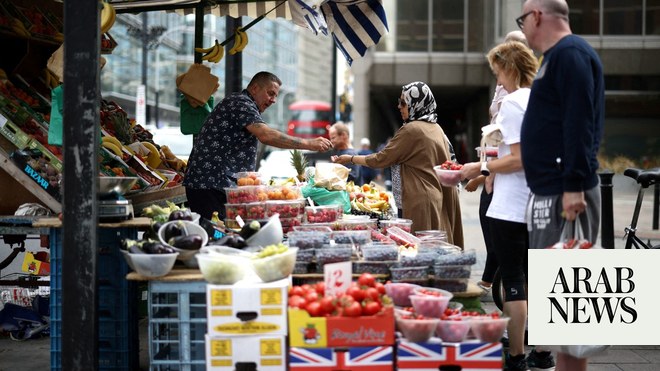
RIYADH: The global food commodity prices witnessed a 2.1 percent decline in August, with the index standing at 121.4 points compared to July. This downturn, as outlined in the latest report from the Food and Agriculture Organization of the UN, also known as FAO, was primarily driven by falling prices of essential food items, excluding rice and sugar.
The FAO Food Price Index, which monitors fluctuations in worldwide prices of internationally traded food products, recorded a significant 24 percent drop from its peak in March 2022.
The decrease was observed across price indices for dairy products, vegetable oils, meat, and cereals, while the sugar price index saw moderate growth.
In August, the FAO Vegetable Oil Price Index experienced a 3.1 percent drop, or 125.8 points, primarily due to reduced global prices for palm, sunflower, soy, and rapeseed oils.
Global sunflower oil prices plummeted by nearly 8 percent, driven by reduced demand for imports and ample supply from major exporting nations. Similarly, soy and rapeseed oil prices fell due to improved soybean harvest conditions in the US and abundant global supply, respectively.
The Dairy Price Index decreased by 4 percent compared to July, attributed to a surplus of whole milk powder from Oceania and a slowdown in imports by China. Skim milk powder prices also reached their lowest point since mid-2020 due to reduced import demand and sluggish market activity linked to European summer holidays.
Additionally, the FAO Meat Price Index fell by 3 percent from July and 5.4 percent from the previous year, primarily due to increased export availability, particularly in Australia, and weaker demand from China.
The Dairy Price Index decreased by 4 percent compared to July, attributed to a surplus of whole milk powder from Oceania and a slowdown in imports by China. Skim milk powder prices also reached their lowest point since mid-2020 due to reduced import demand and sluggish market activity linked to European summer holidays.
Additionally, the FAO Meat Price Index fell by 3 percent from July and 5.4 percent from the previous year, primarily due to increased export availability, particularly in Australia, and weaker demand from China.
Furthermore, the FAO Cereal Price Index declined by 0.7 percent compared to July, with international wheat prices dropping by 3.8 percent in August amid higher seasonal availabilities from leading exporters. Global coarse grain prices also fell by 3.4 percent due to abundant maize supplies from Brazil’s record harvest and the upcoming maize harvest in the US.
On the contrary, the Sugar Price Index increased by 1.3 percent compared to July and was 34.1 percent higher than its value from a year ago. This rise was driven by concerns about the impact of the El Niño phenomenon on sugarcane crops, alongside below-average rainfall and ongoing dry weather conditions in Thailand.
However, factors like the significant sugar crop harvested in Brazil, lower ethanol prices, and the depreciation of the Brazilian Real helped mitigate upward pressure on global sugar prices.
In another market development, the Rice Price Index surged by 9.8 percent from July, reaching its highest level in 15 years. This was a consequence of disruptions in the rice trade following India"s ban on exporting Indica white rice, the world’s largest rice-exporting country.












